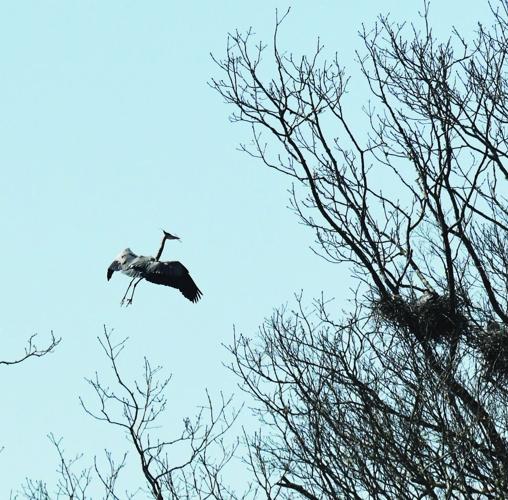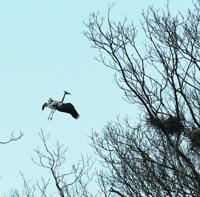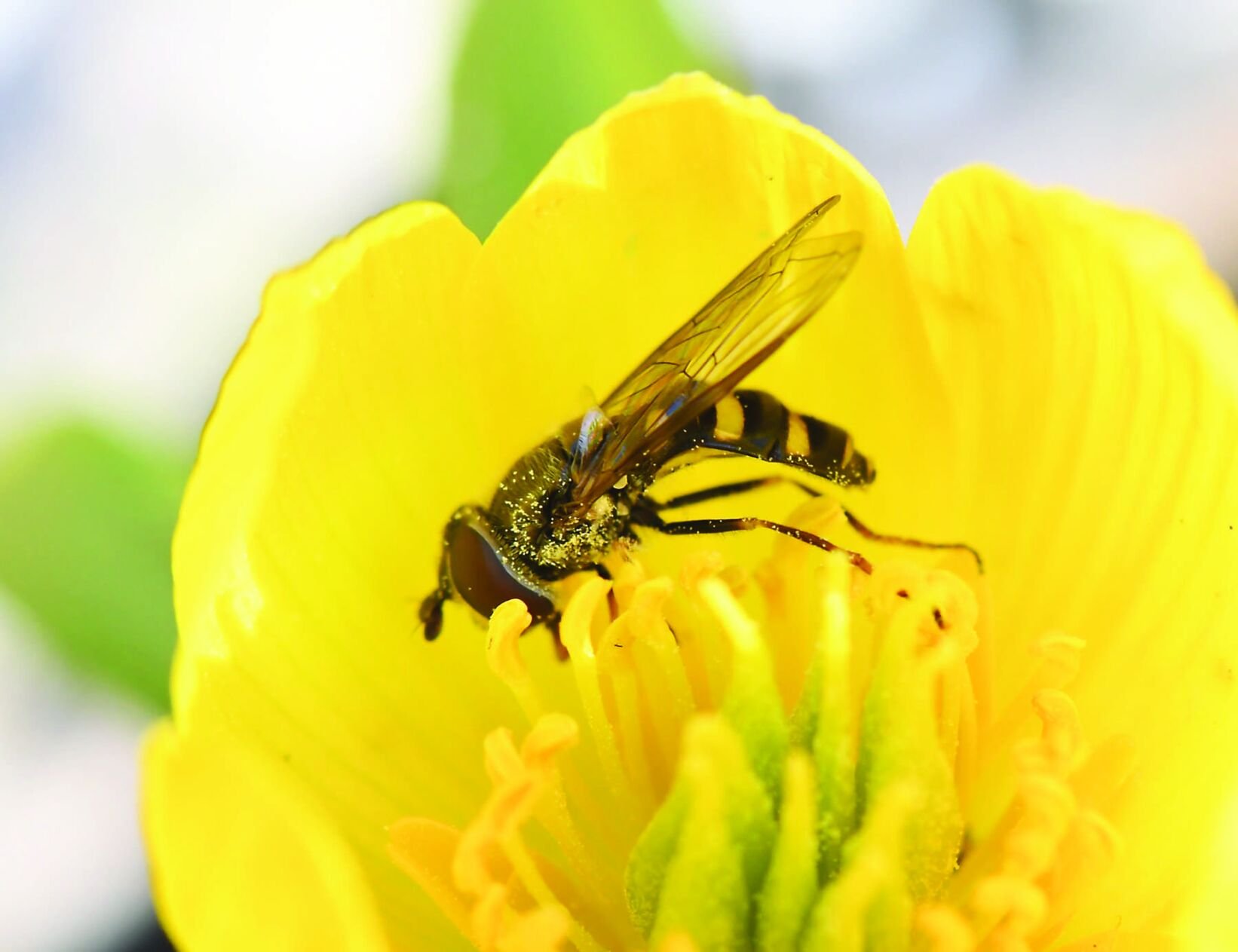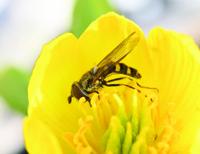“April is the cruellest month,” said Nobel Laureate poet Thomas Stearns Eliot in his 1922 masterpiece, The Waste Land. Many of us past a certain age had to decipher the long and complicated poem in high school English class, and although that endeavor might have been cruel enough, Eliot’s opening words, which I first read nearly 60 years ago, have stuck with me, and, in the climate change era, they ring even more true today than in prior decades.
Put more succinctly by my grandkids and my school-aged students, “April sucks,” and while I apologize for such uncouth language—“Guys, please… let’s be a little more elegant...”—I have to admit that they’ve really nailed it. To be sure, March is no prize, and a month in which climatic joy is giveth and then taketh away, too often in the form of sudden cold snaps and deposits of heavy, wet snow on the heels of 70-degree days filled with promise, pollinators, and frog calls, can often rival April in the cruelty department.
But the blessings we’re about to receive as we turn the calendar are increasingly better in the T.S. Eliot time zone, so when they’re snatched from our grasp, as they certainly will be, a month immortalized for its skill in “breeding/Lilacs out of the dead land, mixing/Memory and desire, stirring/Dull roots with spring rain,” is a month guaranteed to bring pain.
Still, old T.S. is not the only poet in town, and his nod to April’s spiritual root canal apparently, noted scholar Tyler Malone in his Poetry Foundation Waste Land guide, turned a much earlier work, Geoffrey Chaucer’s Canterbury Tales, on its literary head. “Chaucer paints April as a month of restorative power, when spring rain brings nature back to life,” wrote Malone in 2023, and in general, I would agree with this assessment.
Greenery and wild flowers are beginning to carpet the fields and woods. Birds are migrating through the area, some to stay, sing, and nest, with others simply stopping to refuel and fill the sometime-gentling air with sweet music. The heartbreaking decline in butterfly populations that scientists have recently documented notwithstanding, there should be at least a modicum of lepidopterans on the wing to cheer the winter-weary soul. And the amphibians I celebrated in March may well have seen their egg-laying efforts start to bear fruit in the form of schools of newly hatched Wood frog tadpoles.
Unless, of course, things turn, well, Frost-y.
The sun was warm but the wind was chill.
You know how it is with an April day
When the sun is out and the wind is still,
You’re one month on in the middle of May.
But if you so much as dare to speak,
A cloud comes over the sunlit arch,
A wind comes off a frozen peak,
And you’re two months back in the middle of March.
So wrote Brer Robert in his 1936 classic, “Two Tramps in Mud Time,” which I also absorbed in Senior English—senior, as in high school, not my current condition—and heartily recommend as the perfect description of the A-list month. (I’d also tout the study of such poems as an example of the glories of a Classical education, both capital C and small c, from Classical High in Providence, to classical-oriented high schools everywhere.)
And, of course, there’s baseball, which, to be sure, can, some years, reinforce April’s cruelty, or, thank you Boston for that eminently satisfying Opening Day thriller, make you doubt the truth of Eliot’s assessment of our fourth month in the calendar.
Well, despite schizophrenic weather and the persistence of a drab, brown, apparently lifeless landscape, there’s reason to be hopeful, at least in the natural history scheme of things. Not only are there daffodils, hellebores, and primroses blooming in many semi-wild gardens, but the first queen bumblebees came out of hiding on a warmish day, actually in late March, to feed up in support of beginning the annual breeding cycle. In addition to the solitary small bees that were already out and about, the debut hymenopterans had company in the form of a newcomer flower fly that I found happily dining on pollen in the yellow bowl of a late-opening Winter Aconite. (I know the dipteran is a member of the subfamily Syrphinae, and from its overall coloration, abdominal marking pattern, and wing venation, I’d put the critter either in the Syrphus or Eupeodes congregation, but, alas, my Canadian mentor, flower fly expert and field guide author Jeff Skevington, has retired for a life as a cruise ship naturalist—so I’ll just have to get better at syrphid taxonomy.)
As noted earlier, I’ve yet to spot a butterfly that would sit still long enough to be photographed and identified, and I’m praying that the overall lack of expected lepidopterans is just my bad luck and not in concert with April’s unfriendliness, or a sign that the dreary conclusion of a recent Science study led by Washington State entomologist Collin B. Edwards and his team has come home to roost. “Between 2000 and 2020, total butterfly abundance fell by 22 percent across the 554 recorded species,” the researchers wrote. “Species-level declines were widespread, with 13 times as many species declining as increasing.”
Oh spring joy and April malfeasance… we’re doing it again.
But not completely. Not yet.
In my tune-up walks for public forays to vernal pools, the Naturalist and his acolytes—praise be, a lot of them—found signs of ongoing natural health with an abundance of marbled salamander larvae that had survived the winter; fairy shrimp, Spring peepers, Four-toed salamanders that had survived March cruelty; and Wood frog and Spotted salamander egg clusters that will, I hope, give lie to April’s untoward reputation for non-nurture. That said, what we discovered was cause for head-scratching and confirmation of the mantra of my much-missed vernals mentor, URI biologist Bob Shoop, who passed away in 2003, that “Every year is a new experiment.”
Every year something new and unexpected will happen along with something routine and predictable. So the spotties came out of winter refuges to court and lay eggs, but in a pond I routinely monitor, the Wood frogs shunned the vernal and instead deposited their progeny in the pond next door. It was a Shoopian new experiment. We shall see how it plays out.
Maybe there’ll be cruelty. Maybe there’ll be blessings.
A Great Blue Heron, a scout from a nearby rookery now filled with almost two dozen mostly active nests, dazzled the pond watchers as the elegant bird flew overhead, squawking loudly as it carried local, non-tariffed lumber towards the nursery complex. A collection of mosses, many bearing the sporophyte generation that will soon be tasked with carrying on the various species, were spread out before us. Along the rock outcrops and in cliff pockets, various ferns, along with the first signs of columbine leaves, added touches of hopeful green to spring’s tableau. A number of pussy willows shed their parkas and put forth blossoms, and one of the earliest true native wildflowers, a member of the genus Draba, opened for business: natural kindness amidst the cruelty.






(0) comments
Welcome to the discussion.
Log In
Keep it Clean. Please avoid obscene, vulgar, lewd, racist or sexually-oriented language.
PLEASE TURN OFF YOUR CAPS LOCK.
Don't Threaten. Threats of harming another person will not be tolerated.
Be Truthful. Don't knowingly lie about anyone or anything.
Be Nice. No racism, sexism or any sort of -ism that is degrading to another person.
Be Proactive. Use the 'Report' link on each comment to let us know of abusive posts.
Share with Us. We'd love to hear eyewitness accounts, the history behind an article.